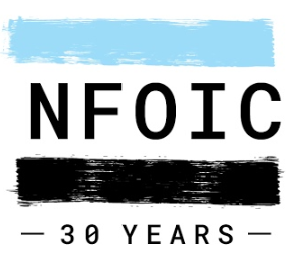Blog Posts
Transparency At Issue As Public Questions D.C. Metro Rail Tragedy and Transit Safety
dcogcadmin | January 23, 2015
D.C. January 22 — The Washington Post reported Saturday (17) the new administration of Mayor Muriel Bowser was “bogged down this week under pressure to provide answers” about an accident in the rail system Monday, January 12, that left one passenger dead and many taken to hospitals for smoke inhalation.
On Sunday (18), Metro chairman, Tom Downs, and interim general manager, Jack Requa, signed “A Letter to Our Riders” in the Post. It offered apologies for the incident, promises for improvement and an “absolute commitment” to provide “a full accounting of what happened on that day, from the cause of the smoke to our emergency response.” Tuesday the D.C. Council learned little when it met with Downs, even in a closed session, according to press reports from Councilmembers who attended.
Local interest is high, especially among the 700,000 that ride Metro rail each week, in learning what happened and why, especially how it was that first responders who got near the stalled train apparently waited 30 minutes before going further to aid those trapped.
By mid-week, the Post editorialized that “answers are urgently needed from Metro,” since “Metro’s near-silence” compared unfavorably with Mayor Bowser’s office that had “proved itself relatively quick, and accountable” by issuing a preliminary report already.
What does open government or “transparency” mean in this situation – how soon can the public expect to learn details?
Investigations of faraway aircraft disasters go on for weeks and months and life goes back to normal elsewhere while the laborious evaluation of technical data and assessment of causes goes on. Reports are issued years after complex accidents. How patient will Washington area citizens be?
Metro is part of government, an interstate compact approved by Congress. The public can ask Metro for records, and anyone denied can appeal internally or even sue in federal court. But this Public Access to Records Policy is only an act of grace of the board, not found in statute as are the D.C., Maryland and Virginia public records laws. And Metro holds all the cards; it gives itself a month to answer, and the policy is filled with exceptions–likely no help for news-hungry locals..
Reporting during the days since January 12 has only partly slaked D.C. residents’ curiosity, as fragmentary information emerges about the events including hints of trouble (unconfirmed) such as limited facts reaching responders topside, radios that didn’t work, fans that weren’t turned on to clear away smoke, trains that couldn’t go in reverse, and doors that stuck. Some facts about D.C. first responders’ actions have been reported from government sources, but Metro has been withholding comment during the investigation by the National Transportation Safety Board. The Post’s midweek editorial did acknowledge “the story so far is necessariy one-sided, and quite possibly tilted.”
The Safety Board has been concerned for years about premature analysis. Board officials who lead investigations must announce at the outset of the on-scene phase of investigations that “parties” (officials from agencies such as an airline or transit system involved in an accident under review) should “please refrain from discussing the accident or our investigation of it in public, or giving information about either to the press. Any violation of this restriction will be considered a serious infraction of Board rules.” Still, the NTSB script adds that party officials may also be told, “This does not mean you may not have any contact with the press. You can discuss certain facts. A good rule of thumb is if you had the information before the accident, you can discuss it after.” And this guidance applies during the first, intense, days of investigation. (See NTSB Investigation Manual, Appendix E, “Opening Statement of Investigator in Charge at Organizational Meeting.”)
But that phase is surely over, as the trains are back in service, the Board has issued its own preliminary report and held another briefing at mid-week (22).
Sons of Carol Glover, the woman who died after the accident, have filed a wrongful death lawsuit in federal court in the District; the initial complaint (dated January 30) gives an account of facts of the accident in support of claims that the transit agency was negligent. The case is Glover v. WMATA, No. 15-cv-00153-TSC.
What will the public be able to know, and when?
UPDATE: The D.C. Council Committees on the Judiciary and Finance & Revenue held a three-hour roundtable on the accident February 5, 2015. Video is here.
In the days leading up to the hearing, the public could see:
—“a few new details” revealed by area Members of Congress as they emerged from Wedesday (22) evening’s closed-door NTSB briefing, though the NTSB official contradicted the Members in press comments reported afterwards;
—brief information from Metro Thursday about problems at the D.C. end of radio communication; and
—a new report issued by the District late Friday (23) with details of recent tests the Homeland Security Agency said showed no radio problems such as Metro mentioned the day before (said the Post, D.C. “fired back at Metro” in the new report).
NTSB has apparently enough evidence to conclude now that tunnel fans were a part of the problem of ineffective response to the emergency. Smoke lingered for many minutes after the train stopped because some fans didn’t work; others weren’t coordinated to move air as fast as possible. So NTSB did break its silence February 11 to write WMATA with “urgent recommendations” for improvements in the tunnel fan system. The letter is public. Summarizing detailed engineering facts behind the relatively brief letter, the same day it was sent, the Post also reported the Board chair’s comment that the full NTSB report is a year away.
